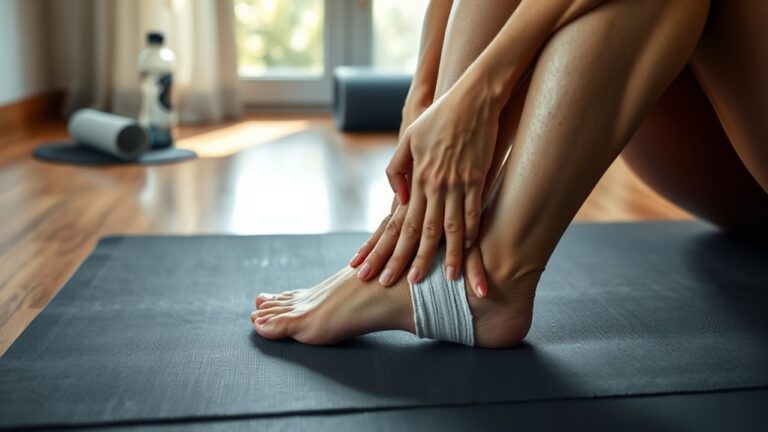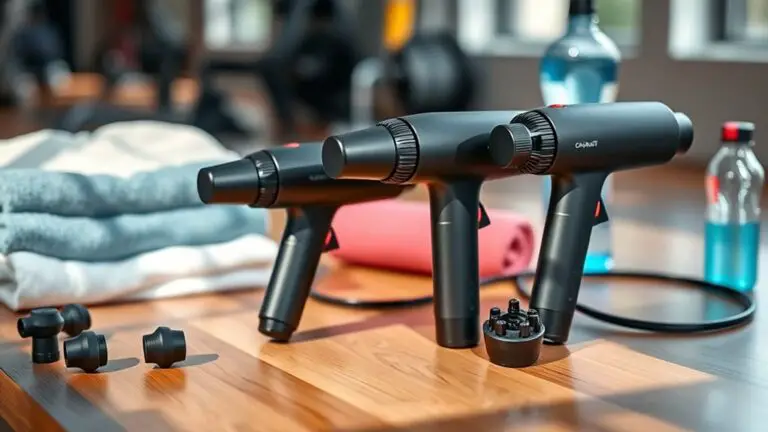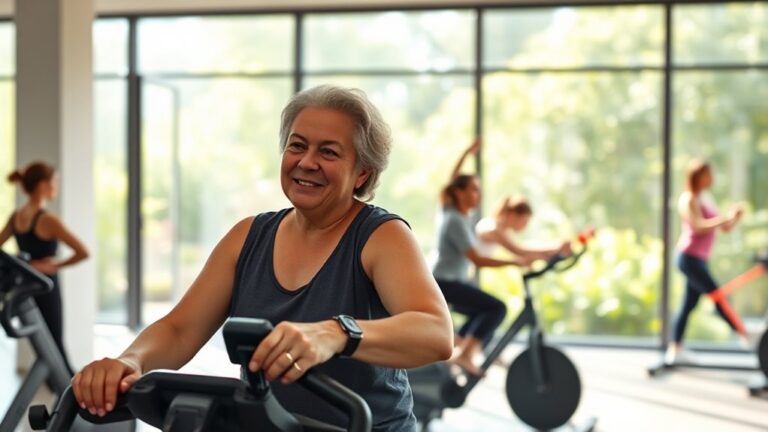The Best Mobility Routines for Faster Recovery

To expedite recovery, prioritize a mobility routine that includes dynamic stretching for warming up, foam rolling for muscle relief, and static stretching combined with yoga post-workout. Incorporate joint mobility exercises to maintain agility, and integrate breathwork to enhance relaxation and body awareness. Tailor your routine to your current physical condition, activity level, and areas of tightness. This structured approach can greatly improve your recovery process. Continue exploring effective techniques for best results.
Understanding Mobility and Its Importance in Recovery
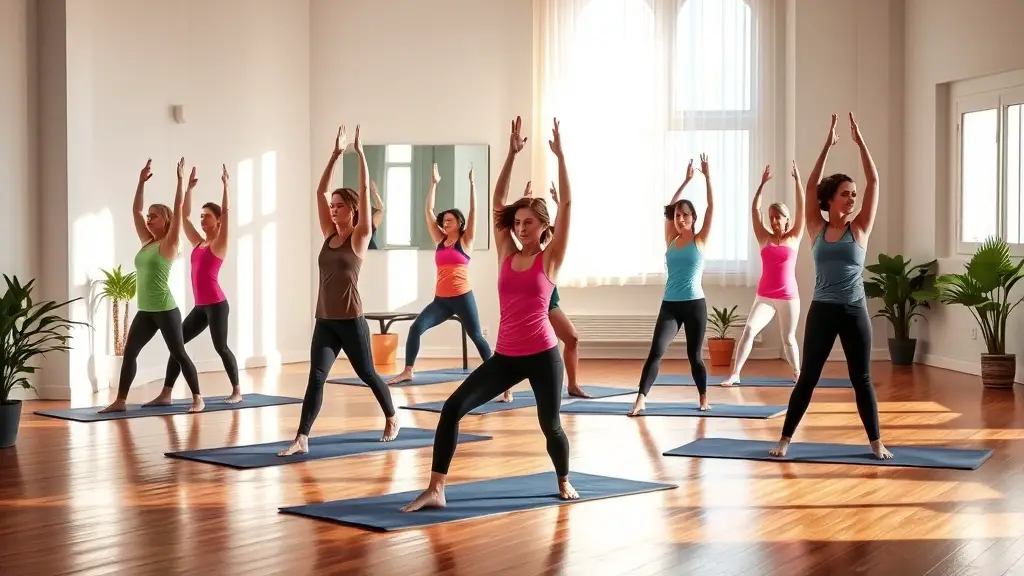
Understanding mobility is essential for effective recovery, as it directly influences your body’s ability to heal and regain function. Improved mobility enhances circulation, allowing nutrients and oxygen to reach your tissues more efficiently, which accelerates healing. Incorporating mobility benefits into your recovery strategies can greatly reduce stiffness and pain, promoting overall well-being.
Engaging in regular mobility exercises can also help maintain joint health and flexibility, essential for preventing future injuries. Additionally, improved range of motion can lead to better performance in daily activities and sports, enhancing quality of life.
To maximize these mobility benefits during recovery, consider integrating stretching, low-impact movements, and specific mobility drills tailored to your needs. These strategies not only facilitate physical healing but also boost mental resilience, providing a holistic approach to recovery. Prioritizing mobility in your routine will lay a strong foundation for a successful recovery journey.
Dynamic Stretching: Warming Up for Success
Incorporating dynamic stretching into your mobility routine can greatly enhance your recovery process. Dynamic warm ups prepare your muscles and joints for activity by actively engaging movement patterns that mimic your workout. This approach not only increases blood flow but also improves flexibility and range of motion.
Consider including the following dynamic stretches in your routine:
- Leg Swings: Enhance hip mobility and activate leg muscles.
- Arm Circles: Improve shoulder flexibility and stability.
- Walking Lunges: Engage lower body muscles while promoting balance.
Foam Rolling Techniques for Muscle Relief
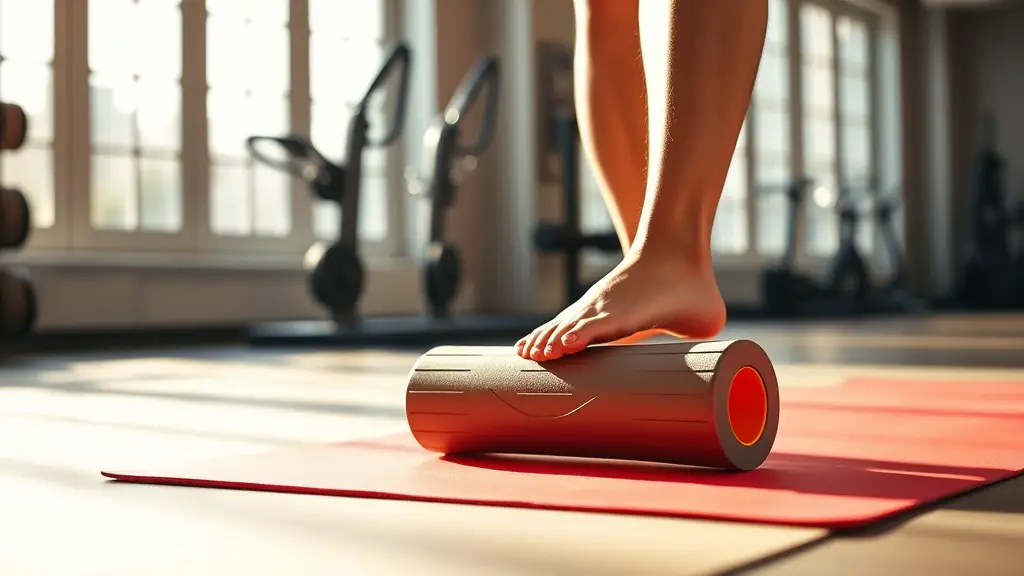
While dynamic stretching prepares your muscles for activity, foam rolling serves as an essential tool for muscle relief and recovery afterward. By targeting trigger points in your muscles, foam rolling can enhance blood flow and reduce soreness. When selecting a foam roller, consider the foam density; firmer rollers penetrate deeper into muscle tissue, while softer ones provide a gentler approach.
Here’s a quick guide to effective foam rolling techniques:
| Technique | Target Area | Notes |
|---|---|---|
| Longitudinal Roll | Quads and Hamstrings | Roll slowly, pausing on tight spots |
| Cross-Fiber Roll | IT Band | Focus on lateral movement |
| Targeted Pressure | Upper Back | Use your body weight to apply pressure |
Incorporating these techniques into your recovery routine can greatly alleviate muscle tightness and promote faster recovery.
Static Stretching: Post-Workout Benefits
Static stretching is an effective method to enhance flexibility and improve your range of motion after a workout. By incorporating these stretches into your post-exercise routine, you can also reduce muscle soreness, promoting quicker recovery. Understanding these benefits can help you optimize your mobility practices for better overall performance.
Enhances Flexibility and Range
Engaging in static stretching post-workout can considerably enhance your flexibility and range of motion. This practice not only aids in recovery but also promotes long-term flexibility benefits and range improvement, which can enhance your overall athletic performance. By holding stretches for an extended period, you’re allowing your muscles to relax and elongate, facilitating greater mobility.
- Increases muscle elasticity
- Enhances joint flexibility
- Supports better posture
Incorporating static stretching into your routine can lead to improved functional movement, reducing the risk of injury. You’ll notice that as your flexibility increases, your ability to perform daily activities and sports-related tasks becomes more efficient, contributing to a more well-rounded fitness regimen.
Reduces Muscle Soreness
Although muscle soreness is a common aftereffect of intense physical activity, incorporating static stretching into your post-workout routine can greatly mitigate this discomfort. Static stretching aids in muscle recovery by promoting blood flow to the muscles, which facilitates the removal of metabolic waste products. By holding stretches for 15 to 30 seconds, you enhance soreness reduction through increased muscle flexibility and relaxation. This process can help alleviate tightness and stiffness, leading to a more comfortable recovery. Furthermore, static stretching contributes to the overall maintenance of muscle health, allowing you to perform at your best in subsequent workouts. To maximize benefits, make certain you include a variety of stretches that target all major muscle groups used during your training.
Yoga for Enhanced Flexibility and Recovery
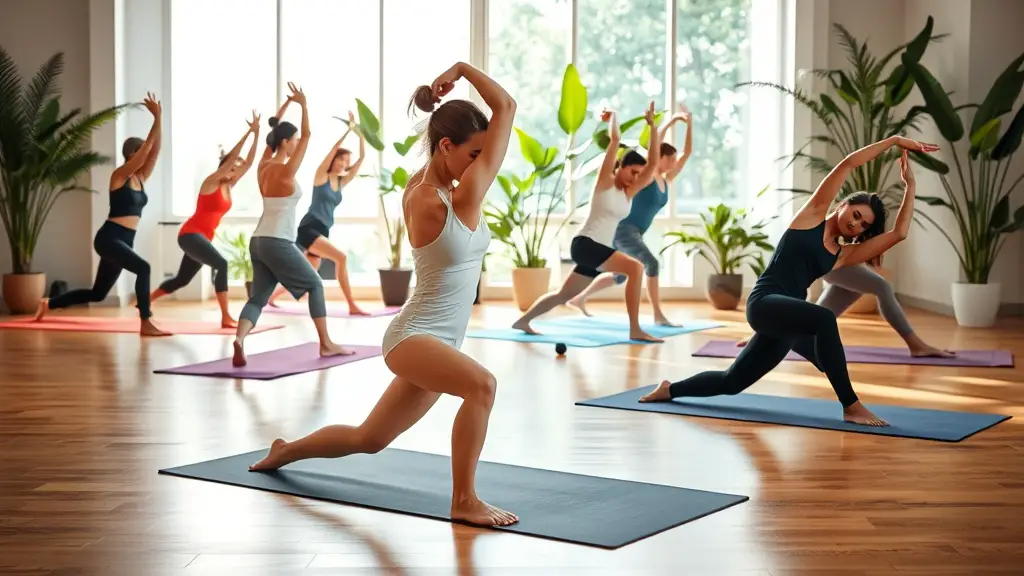
As you incorporate yoga into your mobility routines, you’ll find that it not only enhances flexibility but also accelerates recovery. Utilizing a combination of yoga poses and restorative practices, you’ll engage your body in a way that promotes healing and reduces tension. Regular practice can lead to improved range of motion and decreased muscle soreness.
Consider the following benefits of integrating yoga into your routine:
- Increased Flexibility: Poses like Downward Dog and Forward Fold help lengthen muscles and improve elasticity.
- Enhanced Recovery: Restorative practices, such as Child’s Pose or Savasana, facilitate relaxation and allow the body to rejuvenate.
- Mind-Body Connection: Focusing on breath and mindfulness during yoga fosters a deeper awareness of your body’s needs.
Joint Mobility Exercises: Keeping Your Body Agile
Joint mobility is essential for maintaining overall agility and preventing injuries. Incorporating effective mobility techniques into your routine can enhance your range of motion and support recovery. Understanding the importance of these exercises will help you optimize your physical performance and well-being.
Importance of Joint Mobility
When you prioritize joint mobility, you’re taking an essential step toward maintaining overall physical health and agility. Joint mobility directly influences joint health, allowing for improved functional movement and enhanced sports performance. Regular mobility assessments can help identify areas needing focus, especially as age impacts your range of motion.
Consider the following benefits of incorporating joint mobility into your daily habits:
- Injury Prevention: Enhances stability and reduces the risk of strains.
- Rehabilitation Strategies: Supports recovery from injuries through targeted mobility exercises.
- Functional Movement: Improves everyday activities and athletic performance.
Effective Mobility Techniques
Incorporating effective mobility techniques into your routine can greatly enhance your overall agility and functional movement. Engaging in mobility drills not only aids in active recovery but also prepares your joints for intense physical activity. Here’s a quick overview of essential mobility techniques:
| Technique | Benefit |
|---|---|
| Dynamic Stretching | Increases blood flow to muscles |
| Foam Rolling | Reduces muscle tension |
| Joint Circles | Enhances range of motion |
| PNF Stretching | Improves flexibility and strength |
Integrating these techniques into your daily regimen will keep your body agile, reduce the risk of injury, and optimize your performance. Prioritize mobility to guarantee a robust and resilient physique.
Incorporating Breathwork Into Your Mobility Routine
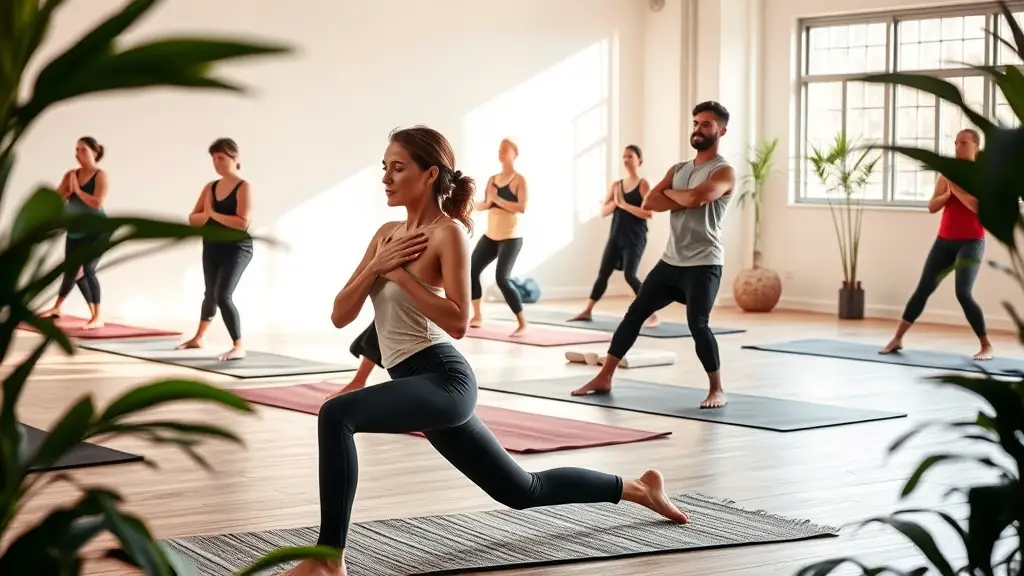
Breathwork can greatly enhance your mobility routine by promoting relaxation and increasing body awareness. By integrating breath awareness and rhythmic breathing, you can optimize your movement patterns and improve overall recovery. Here are some strategies to incorporate breathwork effectively:
Integrating breathwork into your mobility routine promotes relaxation, enhances body awareness, and supports optimal movement and recovery.
- Focus on Inhalation and Exhalation: Synchronize your breath with movements, ensuring each inhale prepares your body for the stretch, while each exhale deepens the release.
- Establish a Breathing Rhythm: Find a consistent cadence that matches your mobility exercises, facilitating a more fluid experience and reducing tension.
- Practice Mindfulness: Engage in focused breathing sessions before or after mobility work to cultivate awareness of your body’s sensations, aiding in deeper relaxation and recovery.
Incorporating these breathwork techniques into your routine will not only enhance your mobility but also foster a greater connection between your mind and body, promoting holistic healing.
Creating a Personalized Mobility Routine for Your Needs
To create an effective mobility routine tailored to your specific needs, it is vital to assess your current physical condition, activity level, and any areas of tightness or discomfort. Identifying your personal goals is equally important, as this will guide the selection of exercises that best suit you.
Here’s a simple framework to help you structure your routine:
| Assessment Criteria | Recommended Focus Areas | Example Exercises |
|---|---|---|
| Current Condition | Flexibility | Hamstring stretches |
| Activity Level | Strength & Stability | Squats, lunges |
| Areas of Tightness | Targeted Mobility | Foam rolling, dynamic stretches |
Frequently Asked Questions
How Often Should I Perform Mobility Routines for Optimal Recovery?
To achieve ideal recovery, you should aim for a weekly frequency of mobility routines tailored to your activity level. If you’re highly active, incorporating these routines three to four times a week can greatly enhance your flexibility and reduce soreness. For those with a lower activity level, two to three sessions may suffice. Consistency is key; integrating mobility work into your routine will help maintain joint health and improve overall performance.
Can Mobility Work Prevent Injuries During Intense Workouts?
When you think of intense workouts, it’s easy to focus solely on strength and endurance. However, incorporating mobility work is essential for injury prevention. While high workout intensity can challenge your body, mobility routines help maintain joint health and flexibility, reducing the risk of strains or sprains. By prioritizing mobility, you’re not just enhancing performance; you’re also safeguarding your body against injuries, ensuring you can continue pushing your limits safely.
What Are the Signs I Need More Mobility Work?
You may need more mobility work if you notice tight muscles or joint stiffness during your daily activities or workouts. If you’re struggling to perform movements that once felt easy, or if you experience discomfort when trying to stretch, these could be signs of inadequate mobility. Additionally, if you’re frequently feeling sore post-exercise, it might indicate that your body requires more focus on mobility to enhance flexibility and decrease the risk of injury.
Is There a Best Time of Day for Mobility Exercises?
There isn’t a universally “best” time for mobility exercises; it often depends on personal preference and schedule. Morning routines can help you wake up your body and enhance flexibility for the day ahead, while evening stretches can aid in relaxation and recovery after a long day. Both options have benefits, so listen to your body and choose the time that aligns best with your lifestyle and mobility goals. Consistency is key.
Can I Combine Mobility Routines With Strength Training Effectively?
Yes, you can combine mobility routines with strength training effectively. Integrating mobility exercises enhances strength synergy, allowing for improved range of motion and reduced injury risk. Mobility benefits include better joint function and muscle activation, which can lead to more effective strength gains. By incorporating mobility work before or after your strength sessions, you’ll optimize performance and recovery. Aim for a structured approach, ensuring both components complement each other for overall fitness enhancement.

